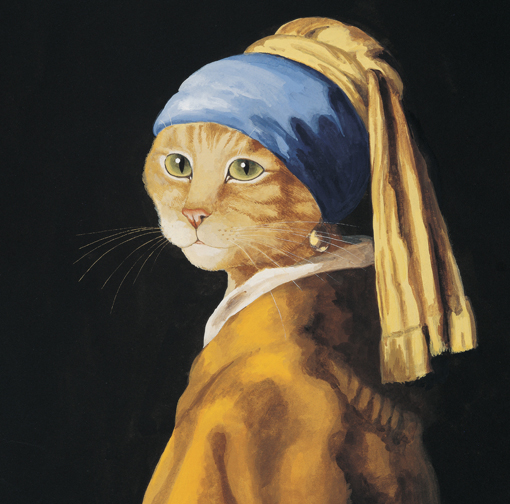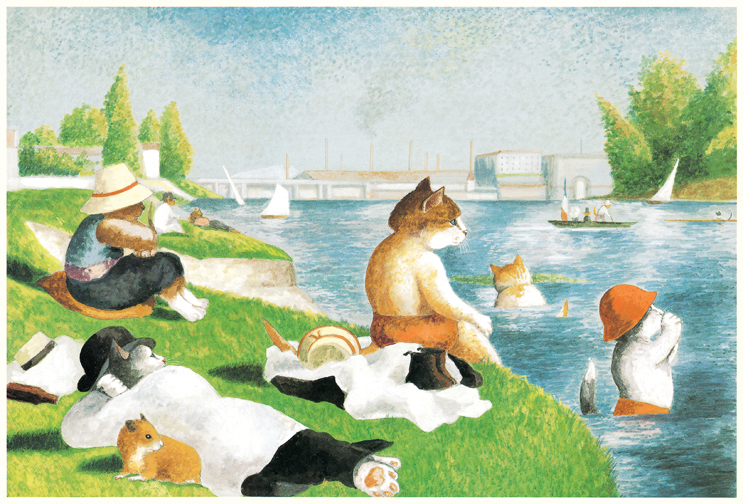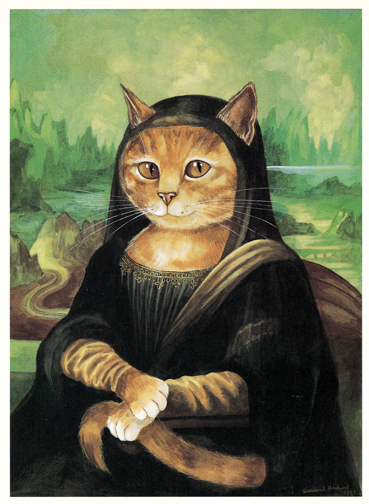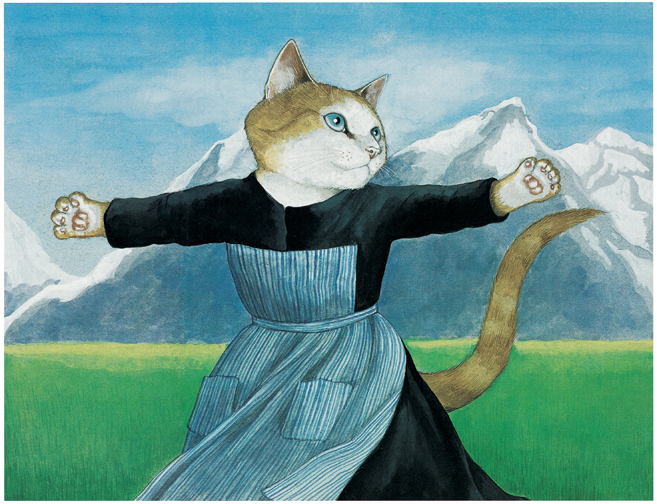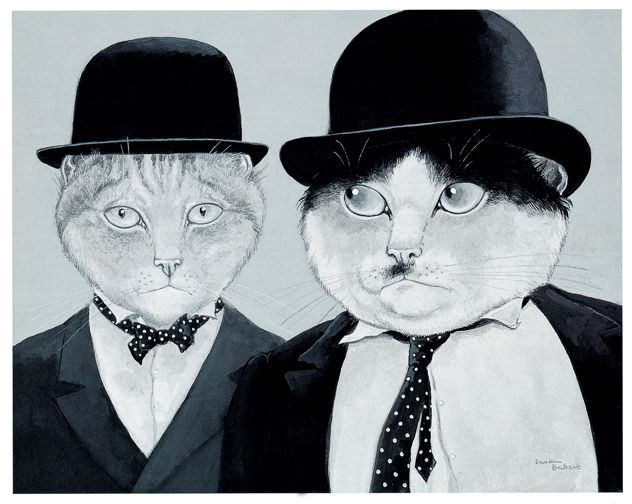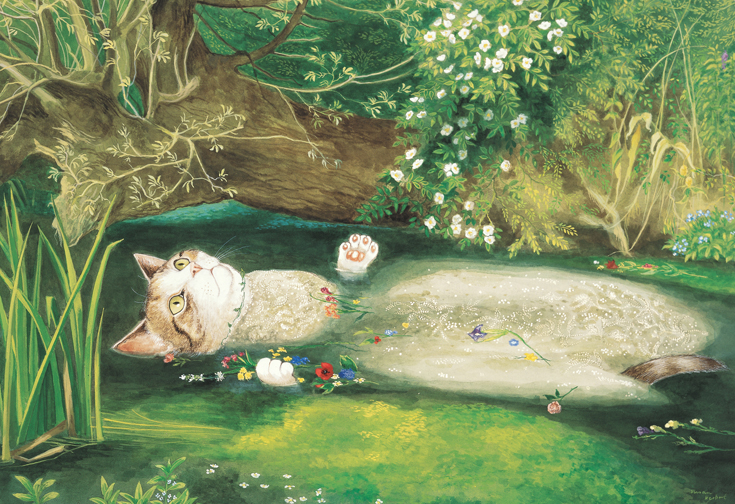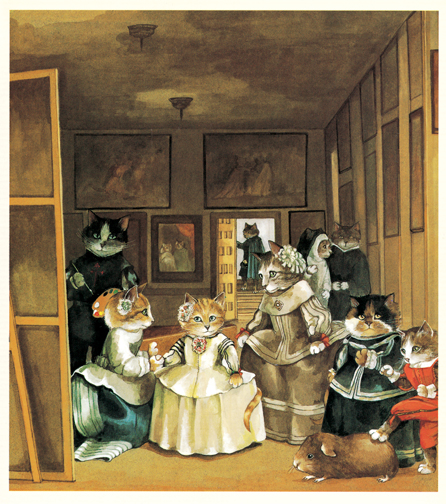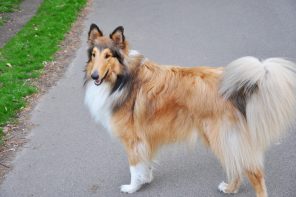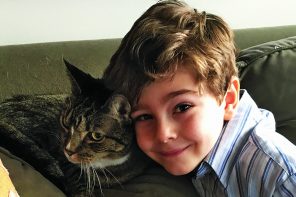“Oh, he don’t belong to nobody. Cats don’t belong to nobody. He just rooms with me.”
— John Wayne to Kim Darby in “True Grit”
The recent Westminster Kennel Club Dog Show featured an addition that gave show-dog owners — something of a high-maintenance breed themselves — paws, er, pause. Cats — drats.
The kitties, in true feline fashion, couldn’t have cared less. As summed up by a New York Times story appropriately titled “Dog Show? Whatever,” the cats — representing The International Cat Association, sort of — “gazed witheringly on the efforts of their human and canine compatriots. Oh, to be a cat and be above it all.”
Perhaps it is this singular self-possession that explains part of our enduring fascination with them. Cats are the second most popular pets in the United States — after a kitty fave, freshwater fish.
The remaining appeal can surely be attributed to an adaptability that would’ve stunned Darwin. As explored in “The Story of Cats” — a mesmerizing two-part miniseries that aired recently on PBS’ “Nature” — cats rose from a common ancestor in the forests of Asia some 10 to 15 million years ago before conquering Africa with an unmatched dexterity, power and sensory acuity. Their names are legendary, even if their numbers are no longer legion — the lion; the clouded, snow and African leopard; the Siberian and Bengal tiger; the cheetah. But the lesser-known serval, caracal and sand cats are just as absorbing in their ability to survive and thrive in an array of environments.
From Asia, cats crossed into North America to become the top predator. There are 13 species of these big cats in the Americas, including the jaguar, the mountain lion, the ocelot, the Canada lynx and the margay. Experts think that about 10,000 years ago in the Near East, some wildcats, acting on the curiosity for which their genus is famous, followed the vermin that followed the farmer’s grain. That was the beginning of the domesticated cat, which now numbers more than 40 species, from the Abyssinian to the Turkish Van. But as any cat companion — “owner” is too strong a word — will tell you, “domesticated” is a relative term for these creatures in thrall to the night.
Unlike dogs, cats retain a fluid relationship with their ancestry that enables them to walk on the wild side any time they want. Indeed, not for nothing is the word “cat” often preceded by “wild” (scores of high school and college teams) or “alley” (the charming 1960s cartoon series “Top Cat”) or followed by “burglar” (as gracefully embodied by Cary Grant in Alfred Hitchcock’s “To Catch A Thief”). Perhaps because of the shadowy side of their nature, cats are often chosen by witches to be their familiars in casting spells (as in the 1958 romantic comedy “Bell, Book and Candle”).
Blame it on the anthropomorphizing ancient Egyptians, who mummified and buried their revered felines. The Egyptians had some 16 feline gods and goddesses, including the protective fertility goddess Bastet, who started out as a lioness deity but became a cat or cat-headed goddess over time. In the new paperback edition of “The Complete Gods and Goddesses of Ancient Egypt” (Thames & Hudson, $26.95, 256 pages), author Richard Wilkinson records the impressions of the Greek historian Herodotus, who observed that the festival of Bastet was the most elaborate religious feast in ancient Egypt, one given to unbridled revels.
Cat amulets and litters of kittens were hot New Year’s gifts, and Bastet’s name was inscribed on New Year’s flasks as a way of warding off evil.
Given this ingrained divinity, is it any wonder that cats always appear to be turning up their noses at something — Remember finicky Morris in the 9Lives cat food commercial? — or someone. Despite the sociability of lions, an exception to the rule among felids, and the sentimentalizing of the species in Andrew Lloyd Webber’s mega-musical — Do you think any self-respecting cat would buy a ticket to “Cats”? — felines are perceived to be deliciously independent, aloof and even downright selfish. They are creatures of place as opposed to their rivals, dogs, which are people animals. Witness Garfield, the lasagna-loving ultimate fat cat who delights in tormenting his clueless owner and his equally knuckleheaded Beagle, Odie, and making catty comments about them. And yet: When Odie managed to get himself thrown into the pound in one episode, Garfield got his tubby tabby body down there to join his shivering sidekick and warm him through the night.
Nowhere is the cat as metaphor for love among the singular more thoroughly explored than in “Breakfast at Tiffany’s,” in which Truman Capote’s elusive party girl, Holly Golightly (Audrey Hepburn, of course), finds a kindred soul in her cat, called Cat:
“Poor cat. Poor slob. Poor slob without a name. The way I see it I haven’t got the right to give him one. We don’t belong to each other. We just took up one day by the river. I don’t want to own anything until I find a place where me and things go together. I’m not sure where that is but I know what it is like. It’s like Tiffany’s.”
Fleeing love in the form of sympathetic writer Paul Varjack (George Peppard), Holly releases Cat, only to go after him and Paul in the rain. As “Moon River” swells on the soundtrack, the three reunite in what looks like the beginning of a happy family.
Holly discovers what cat people will tell you they have always known: Cats are loving and lovable creatures, just in their own inimitable way.
And if there’s hope for them, well, then, there’s hope for us, too.

